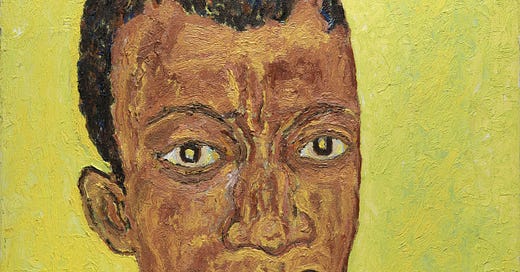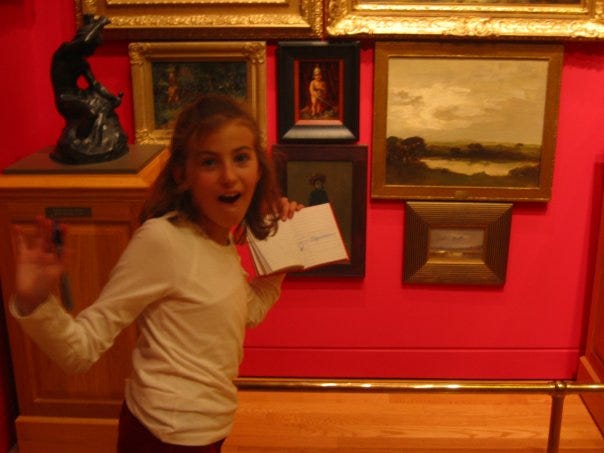An artist-first approach to art
How money, care, and community come together in the art world
In 2020, Patel Brown Gallery in Toronto asked me to write an essay for their “Art Foundations” series. The following essay is what I contributed, with some slight changes. It captures a moment of deep crisis and my attempt at a solution in the art world. It may be a bit naive in ways, but I stand by it.
I’ve been thinking lately about what I’ve loosely coined “an artist-first approach to art.” To expand:
I love art. Sometimes, I think about a specific painting, artist, or museum, and I get so overwhelmed with love that it surprises me. Where does this passion come from? I’ve tried to work backwards, to a childhood spent sketching Henry Moore sculptures in the Art Gallery of Ontario, walking tours around the Rijksmuseum, and painting at art camp. Perhaps my love of art reflects the care of being taken to galleries while growing up? Or did art provide a private space, something that felt like mine alone? I’m trying to create logic out of something (love) that defies all reason.
I’ve loved many artists in my life that shifted my outlook on art. My love of art is no longer centred on the object, a tangible work that can be viewed from afar and coveted, but on the person behind it. If a painting is a flower, the artist exists layers under the ground, comprised of soil and roots and rocks and water (this may also be why artists are sometimes difficult to be around). Through knowing artists, my whole world opened up, not unlike entering a museum for the first time as a child. James Baldwin wrote about his friendship with Beauford Delaney, “He taught me how to see, and how to trust what I saw. Painters have often taught writers how to see. And once you’ve had that experience, you see differently.” I’ve found that to be true, an entire sense activated by the artists in my life.
While I care about the art hanging in my home, I care more about the artists who made it—the ones who taught me to see. I frequently look at the work on my walls, and I’m taken by their skill: the saturated colours, confident lines, and playful compositions. The genesis stories of the works’ creation connect me with the artists; the technical skill amazes me. I can feel the level of care the artist put into the work, and I feel that care tenfold. Artists give so much and ask for so little in return.
How can the art world become a two-way street, one where we replicate the care shown by art and give it back to the artist? In an artist-first model, work isn’t bought to be flipped in a couple of years as an investment or to fill a gap in a collection. This way of collecting, while I’m sure exhilarating, divorces the art from the artist. Instead, I wonder how, as an artist community, we can cultivate greater relationships between art as a physical object and the artist who creates it.
The writer Paul Soulellis published a talk in 2020 in which he asked, “What does communal care look like in a moment of crisis? Maybe something like this: solidarity, mobilizing networks of people within and across communities, connecting needs with resources, and redistribution of assets—these are some of the inspiring mutual aid strategies we saw in action during the first few days of the pandemic.” These actions can be seen acutely between artists. Consider how artists stepped up, quickly donating work for fundraisers to assist hospitals and marginalized communities as soon as the pandemic became widespread. Shows swiftly cancelled or postponed were shared eagerly by fellow artists on Instagram feeds. Artists know care. It’s embedded in the very practice of what they do.
These examples of ways to show communal care don’t necessarily hinge on a monetary exchange. Soulellis refers to these things as urgent artifacts: collaborative spreadsheets that offer resources, online petitions, protest signs, letter writing, essay writing, streaming workshops, performances, talks, zines, and memes. These objects show solidarity, which includes open access to shared skills to support each other. “Urgent artifacts expose our collective pain points and provide a fleeting record of the moment. It’s crucial that we acknowledge and make space for this work, affirm and support each other in non-traditional forms of making and creating,” Soulellis writes. I’d like to extend these principles to an artist-first approach to art for a relationship of support to exist outside of the exchange of money equals painting.
That being said, I should talk about money briefly—an incredibly gauche topic that is typically avoided at all costs. I’ve left it right till the end so you can X out of the window if the thought offends you. It feels strange to suggest money equates to care, but it does give artists the space to take risks and to create their best work. As much as artists genuinely wish to be recognized and respected for the work they do, maintaining that without threat from outside forces, without precarity, becomes difficult. This is why artist grants and government funding of art are so important. It’s also why buying art, especially from emerging artists, is a meaningful action.
An artist-first approach to art means following a young artist’s career, showing up at openings, and offering support and opportunities in multiple forms. It also means extending care to art workers outside of the public eye: cleaners, art handlers, security guards, life models, and art movers, to name a few. All of the people who make the art world move behind the scenes.
As we face a global shift in the world, both culturally and economically, I wonder if we can take this moment of pause as a reset of the art market. One where the core value isn’t “investments” but “care.” If we strip the market of the commodification of work, the ego leaves with it. In its place, a community develops, relationships form, and art holds more meaning. With an artist-first approach to art, we give artists the space and resources to create their best work, showing care to everyone who stands in front of their art.







Im an artist. And I appreciate you seeing us, under the layers and marks we make. Appreciate you “getting” that we exist in a world that is transactional while at our core that is not the reason we do the work we do. We pay attention to the things most are unable to or it got beat out of them. We share it. We don’t know any other way to be.
So Thank You.
I don't know, Tatum. I mean. I get what you are saying, and to some extent I agree. But our overriding need, it seems to me, is to deepen people's ability to experience art. Above all we artists want more people to be able to dwell in pictures, to be moved by form, to feel the art deeply; that is, we need an aesthetically sensitive audience. It seems to me we need an art-first approach to art.